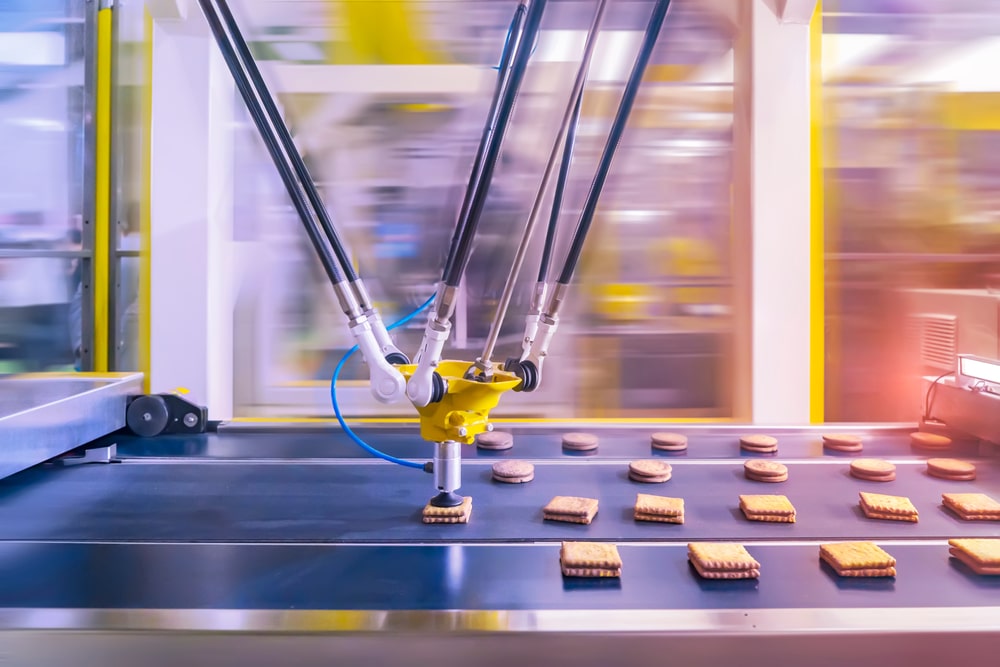

Originally published on fastradius.com on October 12, 2022
Additive manufacturing, also known as 3D printing, has become an increasingly popular manufacturing method across many industries, from the automotive industry to the medical industry. Over the last few years, there have been several advancements in 3D printing technology, allowing manufacturers to create increasingly complex and durable components that are on par with those made via CNC machining or injection molding.
Additive manufacturing has also had a significant impact on the food industry, which has strict requirements to ensure that the materials which come in contact with food are safe for people.
3D printed parts can be food-safe and meet Food and Drug Administration (FDA) and U.S. Department of Agriculture (USDA) regulations, as long as specific steps and precautions are taken. To ensure your parts are safe for use with food, you’ll want to follow 3-A Sanitary Standards and review your part’s design, your materials, and the additive manufacturing process itself. To help you get started, follow these best practices when it comes to designing 3D printed food-safe products:
Make sure that any section of your part or product that can come into contact with food (product contact surfaces) is free of crevices and voids. These features are difficult to clean and can allow bacteria to thrive. If your part requires voids or crevices, ensure that those areas can be easily accessed for cleaning when your product is disassembled.
Sharp corners are difficult to clean, and like crevices and voids, can potentially harbor bacteria. With this in mind, you should round any corners within your design, and instead incorporate fillets with large radii when possible.
When you’re manufacturing food-safe products, make sure that your parts are robust enough for their applications. If they crack, corrode, or break down, bacteria can grow, putting users at risk. Additionally, if a part breaks, small pieces may contaminate the food, posing a danger to consumers and often requiring a recall of the product.
A part’s surface finish can be problematic, as rough surfaces have small pockets that enable bacteria to grow. However, creating food-safe 3D printed products with smooth, non-porous surfaces can be challenging, as 3D printers build parts layer by layer, resulting in microscopic crevices. To achieve surface smoothness, you can use:
The additive manufacturing process you choose also plays a role in the amount of post-processing you’ll need to do. Technologies like stereolithography (SLA), HP Multi Jet Fusion (MJF), and Carbon® Digital Light Synthesis™ (DLS) produce parts with smoother surface finishes than fused deposition modeling (FDM), and typically require less post-processing. However, regardless of technology, even if a part is printed with food-safe materials, it might not be considered food-safe if the printer isn’t itself deemed food-safe. Something as small as an FDM printer’s nozzle containing lubricant can cause the resulting parts to be considered non-food-safe, so every detail counts.
Additive manufacturing, unlike injection molding, doesn’t involve machining expensive tooling to mold plastic parts. By eliminating the cost and lead time associated with machining injection mold tooling, companies can save a great deal of time and money when making parts and maintenance tools for their factories, such as spacers, grippers, and assembly tools. Additionally, additive manufacturing — particularly when combined with digital part storage and factories with cloud-based manufacturing capabilities — is an ideal process for producing spare parts, keeping equipment up and running and avoiding expensive, unplanned downtime.
When creating products that will come into contact with food, choosing the right material is essential. You’ll want to choose a non-toxic, non-contaminating, corrosion-resistant base material, and you’ll need to make sure any added coatings or dyes are also food safe.
Specific food-grade plastics that are compatible with the additive manufacturing process include:
Manufacturers often use sterilizable additive materials, as the last thing they want is for bacteria to grow unchecked within a product that comes into contact with food. However, it’s important to know that not all sterilizable materials are necessarily food-safe materials.
The introduction of additive manufacturing to the food industry has changed the game. Thanks to 3D printing, companies can create food-safe products from a wide variety of materials quickly, cost-effectively, and on demand. However, creating food-safe products via additive manufacturing isn’t as simple as selecting appropriate materials. You’ll also need to pay attention to your printer, your part’s design, and your part’s surface finish.
There’s a lot to remember when trying to meet regulations and create food-safe products, so using an experienced manufacturing partner can put your mind at ease and ensure your customers aren’t put at risk by unsafe products. When you work with SyBridge, our engineering team can help you choose an FDA-approved plastic that will meet your needs and ensure your design is ready for printing. You can also upload your part files to get an instant DFM analysis of your design, explore material options, and order your parts online — even using a purchase order (PO). Contact us to discuss the requirements for your next food-safe additive manufacturing project.
Forget typical cycle times. We're pushing the boundaries of conformal cooling. While traditional approaches deliver…
Forget typical cycle times. We're pushing the boundaries of conformal cooling. While traditional approaches deliver…
From left to right: Brayden Janak (apprentice); Logan Vifaquain (CNC machining, Programming and CMM); Ron…
SyBridge Technologies is proud to announce we have been awarded the 2023 General Motors Supplier…
Today, designers and engineers are accustomed to working with digital tools in their day-to-day jobs.…
Optimizing Your Injection Molding Process for Cost-Effective Manufacturing Excellence In today’s competitive landscape, manufacturers are…